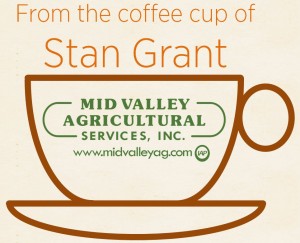
The rarity of early season frosts is among the many natural assets of California that lend themselves to winegrape growing. Still, when frosts occur the results can be economically devastating, with low revenues for the growing season due to significant yield loss (Fig 1). In some instances, with prolonged, very cold temperatures, shoot damage and reduced yields are unavoidable. Fortunately, temperatures during many frost events are slightly below freezing and short in duration. In these circumstances, we can take actions in the vineyard to minimize or avoid frost damage. Our challenges are integrating frost avoidance strategies into our broader vineyard management plans and containing their costs.
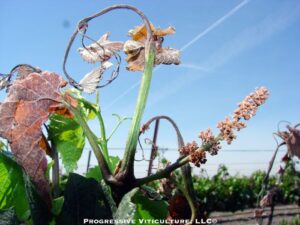
Figure 1. Frost damaged shoot organs: tip, leaves, stem, and cluster.
Photo source: Progressive Viticulture, LLC ©
Assessing frost risk is the first step in frost protection. Grapevines are most susceptible to frost damage when they are located at high elevations, in low-lying areas were cold air settles, and next to obstacles to air movement, such as orchards, tall riparian vegetation, levees, and buildings (Fig 2). Even within vineyards that appear open and flat, there may be some sections that repeatedly sustain frost damage due to reoccurring settling of cold air. Obviously, vineyard managers must be particularly diligent to minimize frost damage in areas prone to freezing.
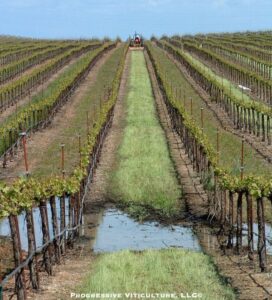
Figure 2. The risk of frost is high in low areas where cold air settles.
Photo source: Progressive Viticulture, LLC ©
The second step in frost protection involves vineyard design. In frost prone areas, orient vine rows in the direction of predominant slope to promote air movement downslope and through the vineyard. In flatter areas, orient rows in the direction of the prevailing wind to take advantage of any air movement. Also, train cordons as high as feasible above the vineyard floor and the coldest air (Fig 3). If possible, plant a variety that breaks bud late and has wooly (tomentose) foliar tissues because they less are likely to become frost damaged (e.g. Mourvedre, Barbera).
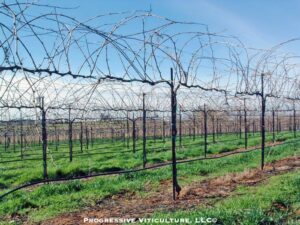
Figure 3. The frost risk decreases as cordon height increases.
A trellis with cordons trained about 60 inches above the soil surface.
Photo source: Progressive Viticulture, LLC ©
In established vineyards, prune to several shorter (1-bud) spurs rather than fewer longer spurs to spread risk & minimize the impacts of frosts. For added frost avoidance, mechanically pre-prune and delay final pruning as late as feasible (Fig 4). Late pruning delays shoot emergence, hopefully to a time beyond the threat of frost. Shoots emerging from late pruned spurs may grow more rapidly and pass more quickly through the stage of greatest risk of crop loss because daytime temperatures are likely to be warmer. The period of greatest risk occurs while the clusters are near the shoot tip (E-L stage 12). This coincides with a shoot length of about 3 to 5 inches.
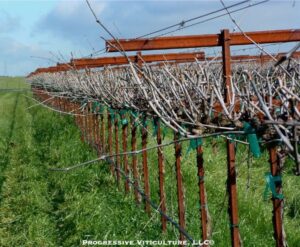
Figure 4. Mechanical prepruning Syrah vines on a Wye trellis.
Photo source: Progressive Viticulture, LLC ©
In frost prone areas, cultivate and pack the tractor rows, and maintain clean berms (Fig. 5). Bare, packed soil absorbs heat during the day and radiates it at night more readily than soil covered with vegetation, dead or alive. Heat exchange is even greater when the soil is moist. In no-till vineyards, it is critical to mow cover crops short (≈ 4 inches) ahead of frost events to maximize heat transfer. Copper sprays, which kill certain bacteria (e.g. Pseudomonas syringe) that serve as condensation nuclei on foliar tissues, may lessen the incidence of frost damage.
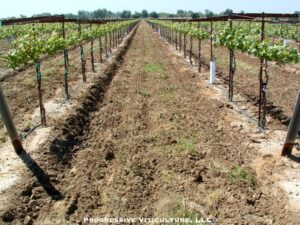
Figure 5. Cultivated and packed surface soils readily
aborb heat during the day and release it at night.
Photo source: Progressive Viticulture, LLC ©
To this point, our discussion of frost protection has involved passive measures before a frost. Where these alone are insufficient, we must adopt active measures that further modify a vineyards environment. Irrigation, especially overhead sprinkler irrigation, before and during freezing temperatures intensifies heat transfer between the soil and air, particularly bare soil. Artificial winds created by large fans circulate and mix air, and in so doing, prevent cold air from settling near the ground and vines. Fans are effective only if the air near the surface is colder than the air aloft (i.e during temperature inversions).
For vineyards damaged by frosts, there are a couple of management options. The first is to do nothing. This is the best option of vineyards with very little cluster damage and in most cases, the best option for cane pruned vines. Disadvantages of this strategy are associated with a flush of lateral shoots on the highest, undamaged nodes of the primary shoots. In many cases, these undamaged nodes are immediately above or within the fruit zone, which frequently leads to excessive shading and increased canopy management costs. The lateral shoots may also bear second crop, which can complicate fruit sampling and harvest scheduling.
The second option is removal of all shoots from all vines within a vineyard or a section vineyard that can be independently managed. In some instances, this can be the best option for spur pruned vineyards with extensive shoot and cluster damage. (Note: most flowers that are lightly frosted and appear yellowish or slightly brownish will cease development and not bloom). To be cost effective, the increase in yield from shoot removal must exceed the cost. Yield responses to shoot removal depend on vineyard location, variety, and pruning method. After the frost of spring of 2008, this method was successful in one out of four cases. In addition to shoot removal costs, this management option has the potential downside of delayed fruit maturation, although delays were inconsequential in trials in New Zealand. (In New Zealand, secondary buds of Chardonnay & Sauvignon blanc were “quite unfruitful”. Based on limited experience in California, secondary buds of Merlot are more fruitful than secondary buds of Cabernet Sauvignon, Tinto Cao, and Touriga Nacional.)
In the end, manage what you know is going to happen and the risks you have some control over. For everything else, purchase insurance to mitigate losses. In other words, do not sacrifice sound viticulture for fear of frost; rather incorporate frost protection measures, as appropriate, into your vineyard operation to optimize fruit production, grape quality, and sustainability.
This article was originally published in the Mid Valley Agricultural Services February, 2010 newsletter.
Further Reading:
Anonymous. Frost damage a hot topic in New Zealand. Aust. Vitic. p. 43-45. May-Jun 2003.
Anonymous. Canopy management assists frost response. Aust. Vitic. p. 81. Jul-Aug 2003.
Donaldson, DR; Snyder, RL; Elmore, C; Gallagher, S. Weed control influences vineyard minimum temperatures. Am. J. Enol. Vitic. 44, 431-434.
Galet, P. General Viticulture. Oenoplurimedia, Chateau de Chaintre, France. 2000.
Kasimatis, AN; Bearden, BE; Sisson, RL; Parsons, RA; Reed, AD; Bowers, K. Frost protection for North Coast vineyards. Univ. Calif. Div. Agric. Nat. Res. Leaflet 2743. 1979.
Lindow, SE; Connell, JH. Reduction of frost injury to almond by control of ice nucleation active bacteria. J. Am. Soc. Hort. Sci. 109, 48-53. 1984.
Snyder, RL; Tau Paw U, K; Thompson, JF. Passive frost protection of trees and vines. Univ. Calif. Div. Agric. Nat. Res. Leaflet 21429. Undated.
Snyder, RL; Connell, JH. Ground cover height affects pre-dawn orchard floor temperature. Calif. Agric. 47, 9-12. Jan-Feb 1993.
Striegler, RK. Spring frost protection in vineyards. Am. Vineyard. p. 4-5, 24-26. Mar 1995.
Striegler, RK; Jorgensen, G; Escalera, B; Berg, GT. Microsprinkler frost protection proves reliable. p. 8, 26-27. Am. Vineyard. Mar 1996.
Winkler, AJ; Cook, JA; Kliewer, MK; Lider, LA. General Viticulture. Univ. Calif. Press, Berkeley, 1974.
Have something interesting to say? Consider writing a guest blog article!
To subscribe to the Coffee Shop Blog, send an email to stephanie@lodiwine.com with the subject “blog subscribe.”
To join the Lodi Growers email list, send an email to stephanie@lodiwine.com with the subject “grower email subscribe” or click on “join our email list” to the right.
To receive Lodi Grower news and event promotions by mail, send your contact information to stephanie@lodiwine.com or call 209.367.4727.
For more information on the wines of Lodi, visit the Lodi Winegrape Commission’s consumer website, lodiwine.com.

